7 Hacks to Make Your Open Office More Private [Infographic]
We get it – open offices can be noisy, distracting, and crammed full of humans.
Once created to foster open communication and rebel against the drudgery of depressing cubicles, there has recently been just as much backlash against open offices.
But with enough creativity, we can find the best of both worlds to foster both communication and privacy in an open office plan.
We researched high and low to find seven of our favorite solutions for making the open office a bit more productive.
1. Portable Space Partitions
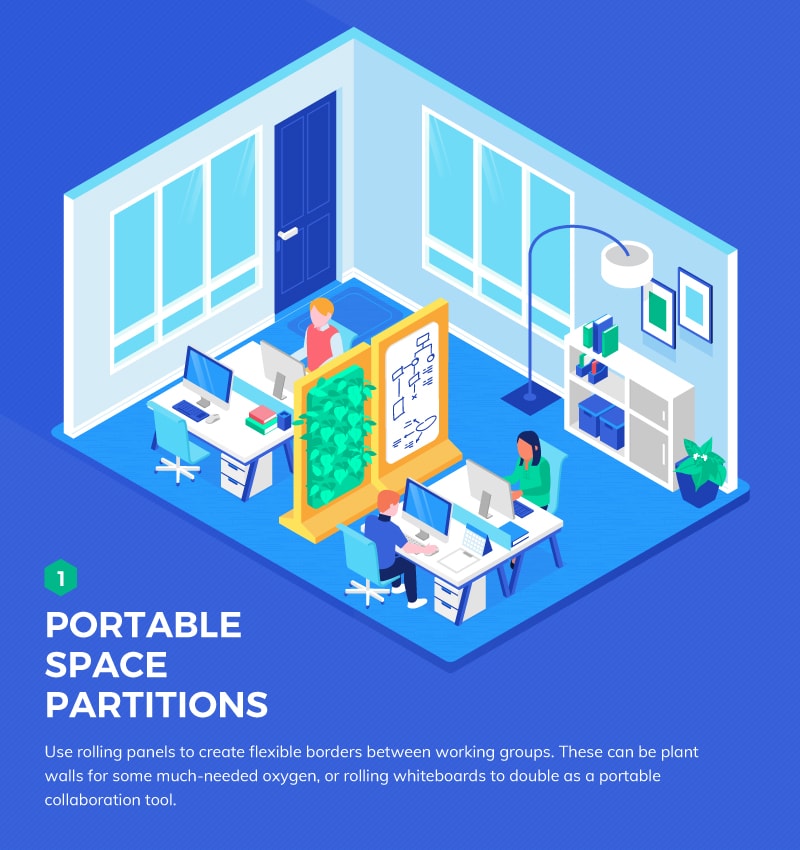
When you want to create distinct sections of the office in a flexible way, portable space partitions are the way to go. These can range from whiteboards and chalkboards to plant walls and anything else you can dream of.
Create boundaries between different working groups to help with team cohesion and identity.
2. Flexible Furniture
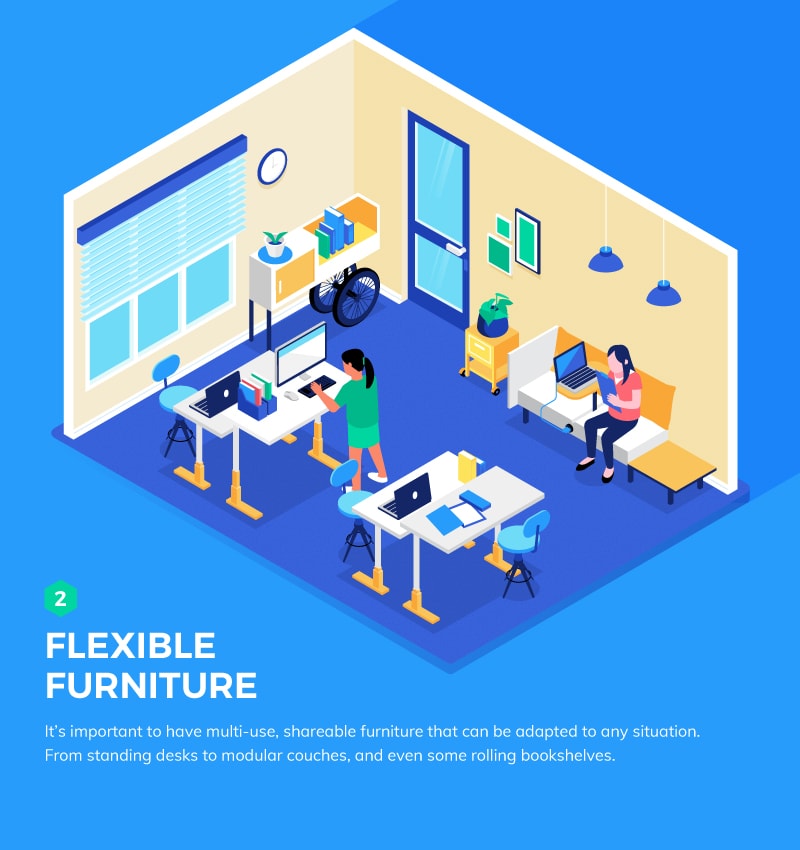
Instead of one fixed piece of office furniture to solve one problem, use flexible furniture that can be moved, bent, and readjusted to fit multiple situations.
We’ve all seen standing desks explode in popularity, but be creative on this one. Include rolling cabinets and bookshelves, casual couches with charging outlets, and anything that expands your ability to help employees focus and get their work done.
3. Workspace Neighborhoods
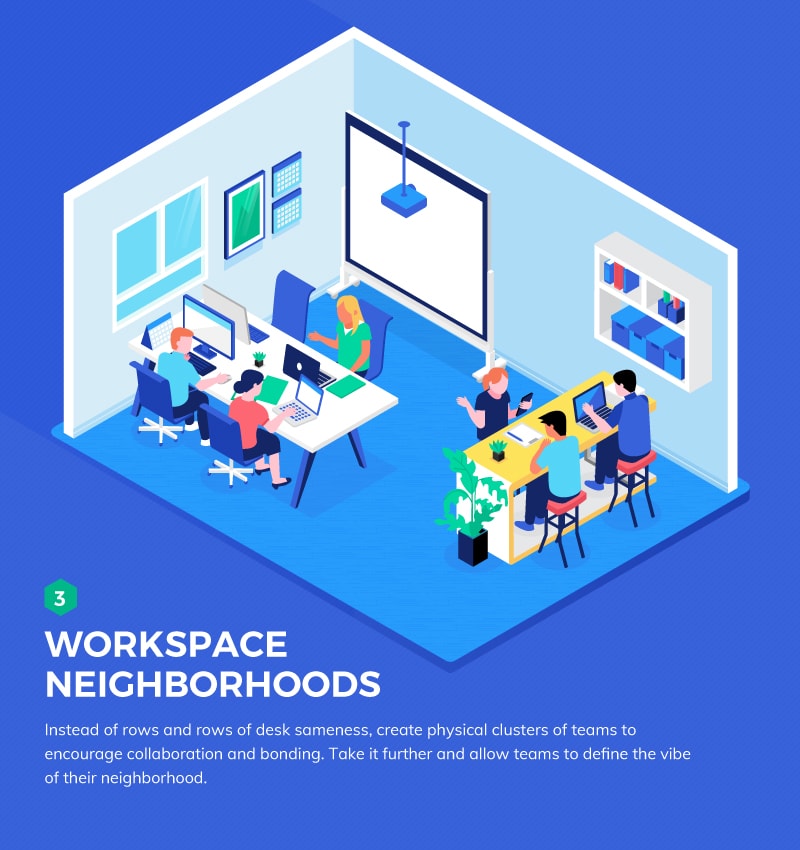
Popular project management and communication tools like Slack and Asana allow employees to be members of different teams depending on the project at hand. It helps focus the conversation around a shared goal and keep all team members in the loop. This can be extended to the physical workspace with office neighborhoods grouped around teams.
By clustering team members together, you allow them to create a closer relationship and improve communication. In an open office, creating clusters of team members helps both team chemistry as well as privacy, as some sensitive conversations can be kept within the group.
4. Soundproof Phone Booths
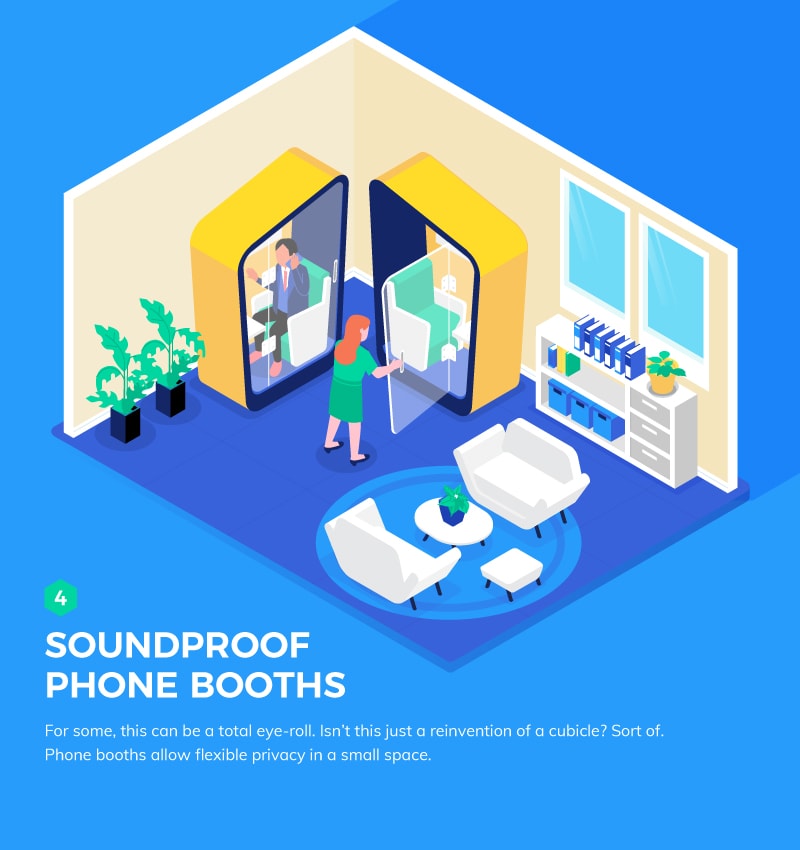
There’s been an explosion in interest in soundproof phone booths, with coworking spaces like WeWork helping to popularize the concept. When employees need to take a private call or don’t want to be overheard by coworkers, the soundproof phone booth perfectly solves the problem.
The benefit of these over everyone having their own office is the space and cost savings involved. Since it’s rare that everyone will be on a confidential call at the same time, these allow only those who need it at the moment to have their privacy.
5. Sound Dampeners
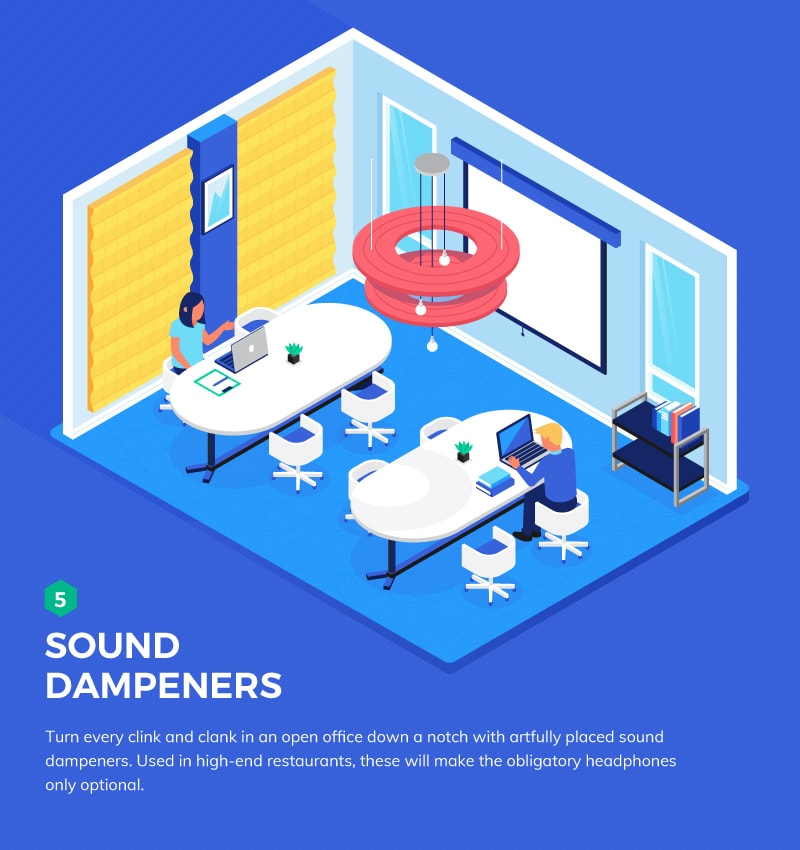
One of the biggest downsides of an open office is the constant background noise that workers must fight against to focus on their work. From overheard phone calls to coughing and loud music, the distractions are non-stop. This can be greatly alleviated with modern sound-dampening devices. These come in all shapes and sizes, and if properly placed throughout the office, can be a real difference-maker.
6. Desk Dividers
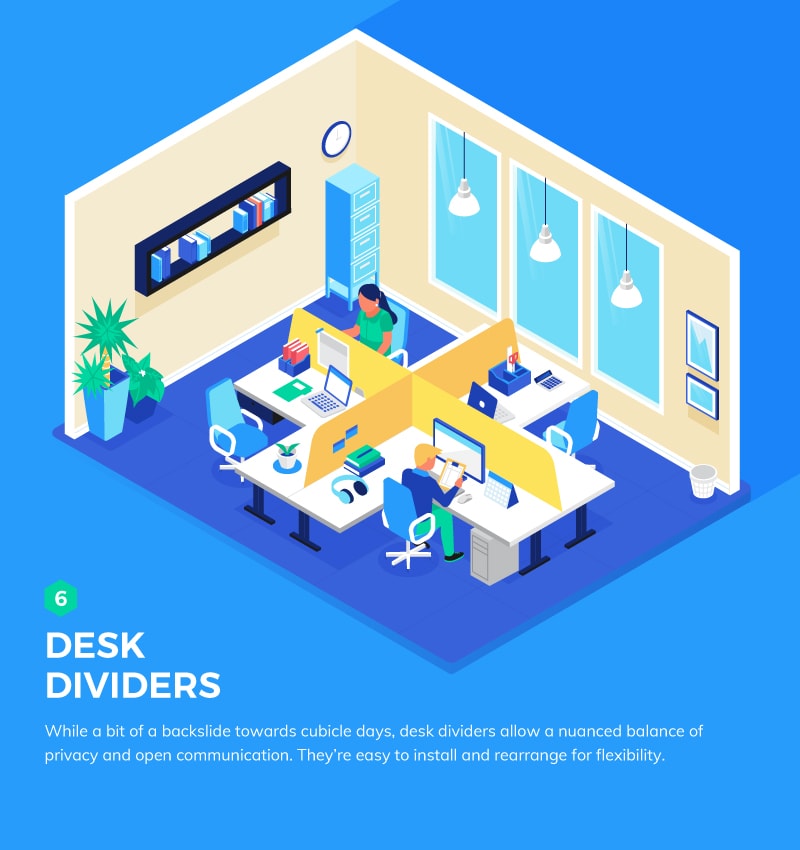
We know that these are borderline cubicles, but there are a few key differences. They typically can be easily rearranged and are much more flexible. They are usually shorter in height and allow for more exposure of the individual desks. They can also be more cost-effective than full cubicles.
7. Getaway Spaces
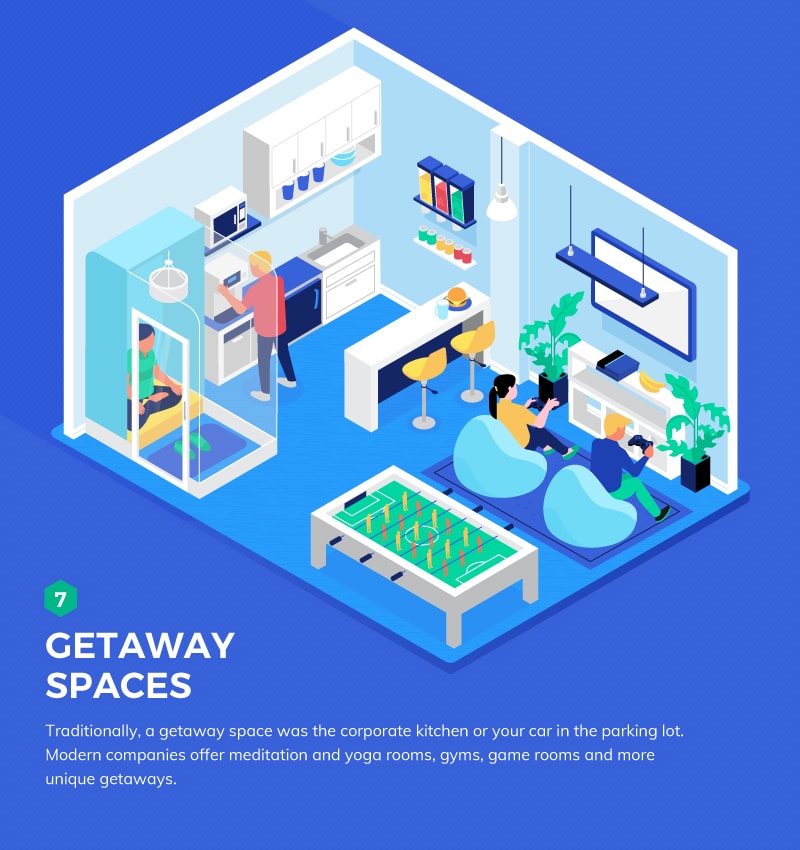
We’ve all seen the drool-worthy digs of Silicon Valley startups that take care of your every whim. While most businesses don’t have the cash to build three-story slides in the office, there are creative ways to build getaway spaces for employees to decompress and get a respite from their open office.
The style of getaway spaces built will depend on your company’s culture, but everything from meditation to game rooms are on the table.
Full Infographic:

Feel free to share on your site by saving the infographic image and publishing on your post. Please provide full attribution to this page as the original source.